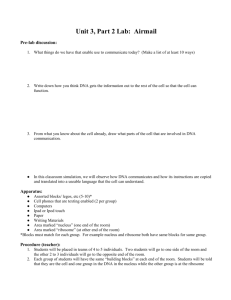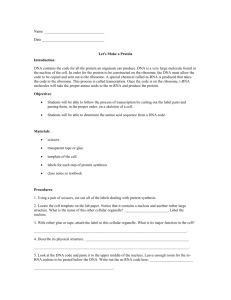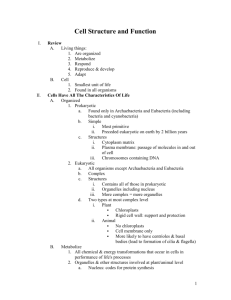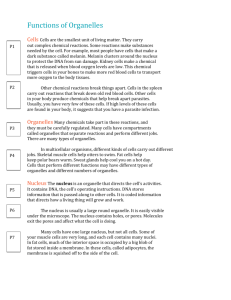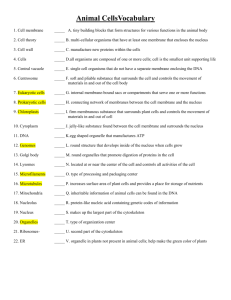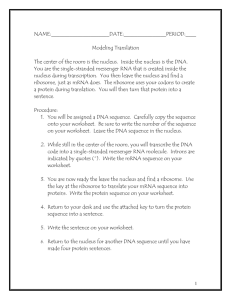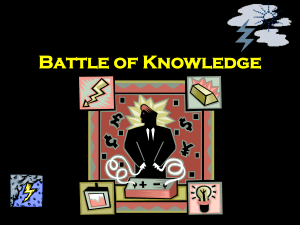Cell Biology in One Page:
advertisement
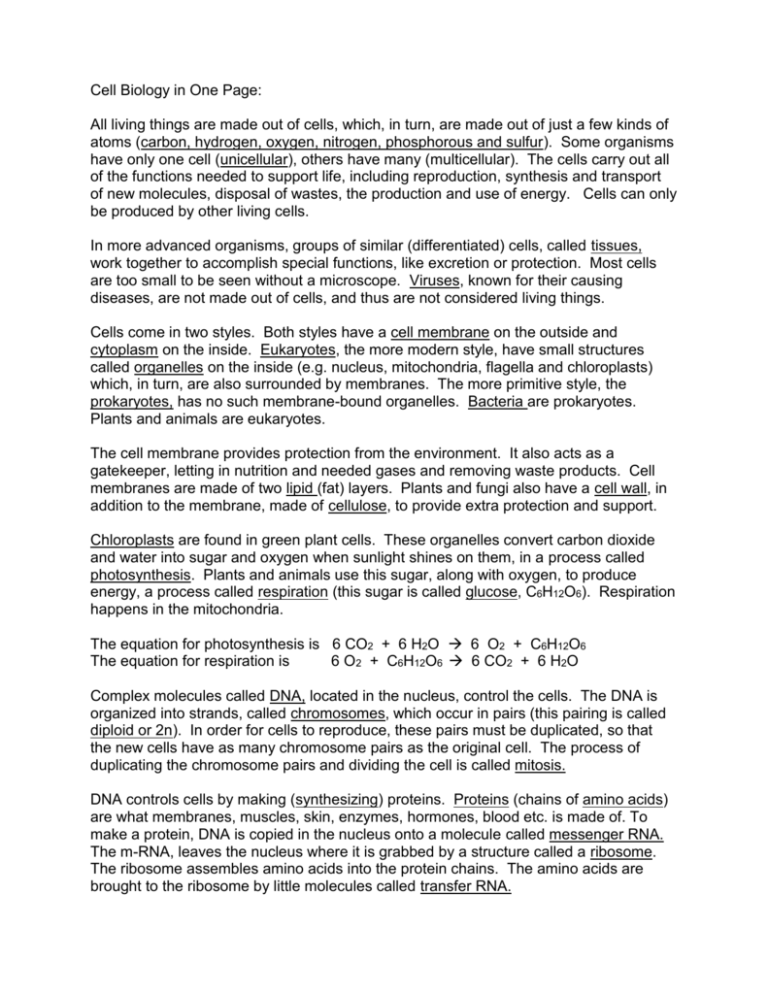
Cell Biology in One Page: All living things are made out of cells, which, in turn, are made out of just a few kinds of atoms (carbon, hydrogen, oxygen, nitrogen, phosphorous and sulfur). Some organisms have only one cell (unicellular), others have many (multicellular). The cells carry out all of the functions needed to support life, including reproduction, synthesis and transport of new molecules, disposal of wastes, the production and use of energy. Cells can only be produced by other living cells. In more advanced organisms, groups of similar (differentiated) cells, called tissues, work together to accomplish special functions, like excretion or protection. Most cells are too small to be seen without a microscope. Viruses, known for their causing diseases, are not made out of cells, and thus are not considered living things. Cells come in two styles. Both styles have a cell membrane on the outside and cytoplasm on the inside. Eukaryotes, the more modern style, have small structures called organelles on the inside (e.g. nucleus, mitochondria, flagella and chloroplasts) which, in turn, are also surrounded by membranes. The more primitive style, the prokaryotes, has no such membrane-bound organelles. Bacteria are prokaryotes. Plants and animals are eukaryotes. The cell membrane provides protection from the environment. It also acts as a gatekeeper, letting in nutrition and needed gases and removing waste products. Cell membranes are made of two lipid (fat) layers. Plants and fungi also have a cell wall, in addition to the membrane, made of cellulose, to provide extra protection and support. Chloroplasts are found in green plant cells. These organelles convert carbon dioxide and water into sugar and oxygen when sunlight shines on them, in a process called photosynthesis. Plants and animals use this sugar, along with oxygen, to produce energy, a process called respiration (this sugar is called glucose, C6H12O6). Respiration happens in the mitochondria. The equation for photosynthesis is 6 CO2 + 6 H2O 6 O2 + C6H12O6 The equation for respiration is 6 O2 + C6H12O6 6 CO2 + 6 H2O Complex molecules called DNA, located in the nucleus, control the cells. The DNA is organized into strands, called chromosomes, which occur in pairs (this pairing is called diploid or 2n). In order for cells to reproduce, these pairs must be duplicated, so that the new cells have as many chromosome pairs as the original cell. The process of duplicating the chromosome pairs and dividing the cell is called mitosis. DNA controls cells by making (synthesizing) proteins. Proteins (chains of amino acids) are what membranes, muscles, skin, enzymes, hormones, blood etc. is made of. To make a protein, DNA is copied in the nucleus onto a molecule called messenger RNA. The m-RNA, leaves the nucleus where it is grabbed by a structure called a ribosome. The ribosome assembles amino acids into the protein chains. The amino acids are brought to the ribosome by little molecules called transfer RNA.

